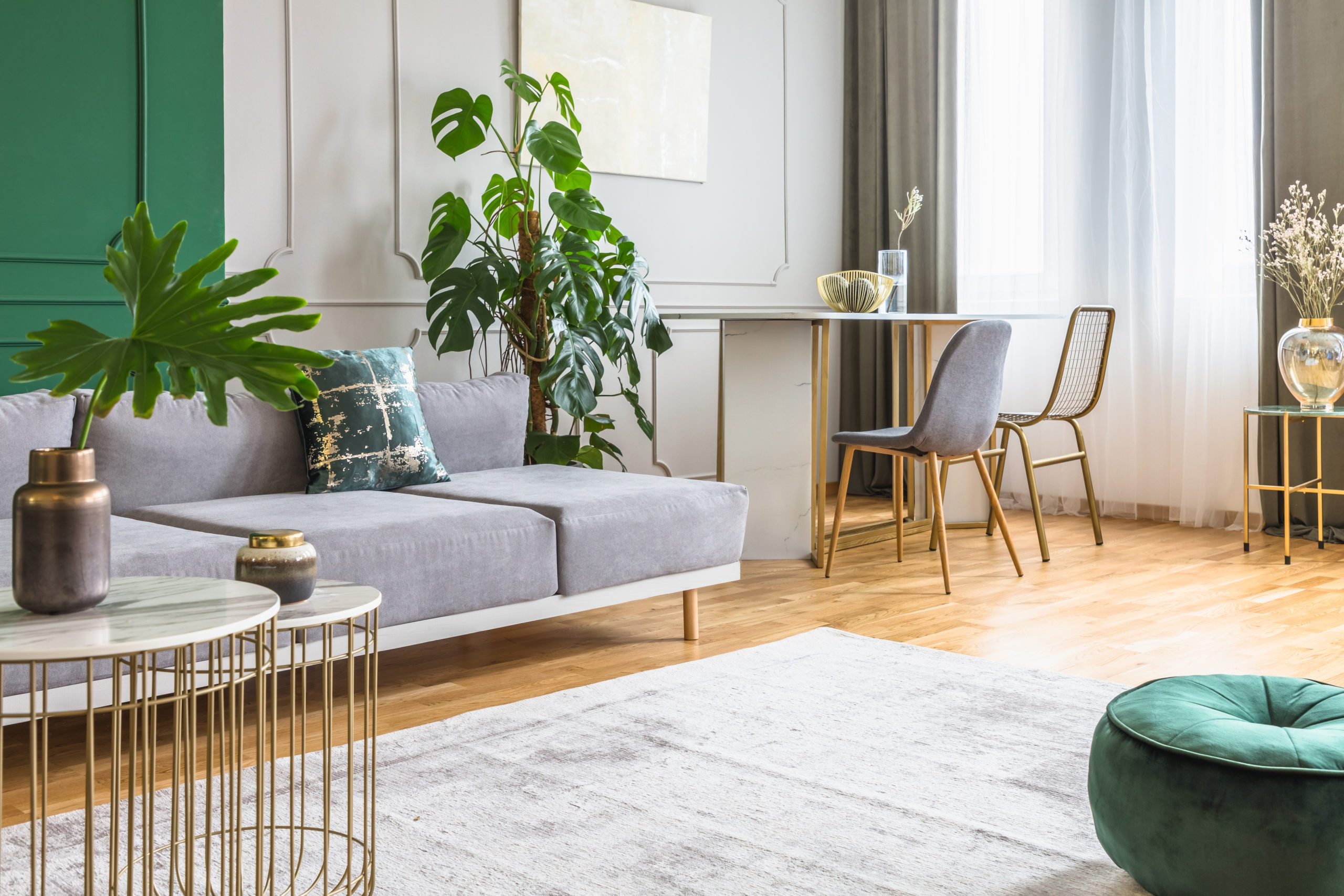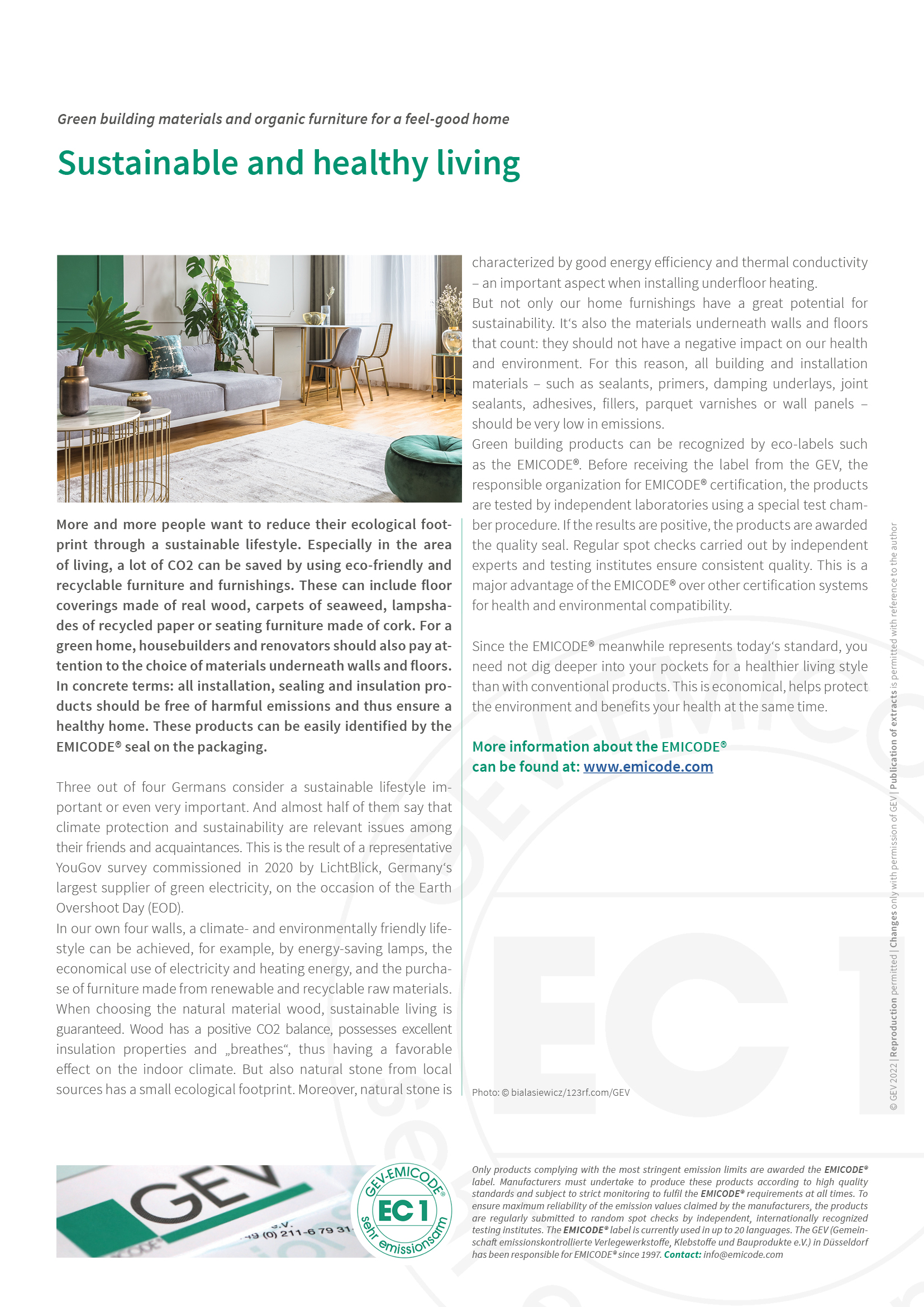Sustainable and healthy living
Green building materials and organic furniture for a feel-good home
More and more people want to reduce their ecological footprint through a sustainable lifestyle. Especially in the area of living, a lot of CO2 can be saved by using eco-friendly and recyclable furniture and furnishings. These can include floor coverings made of real wood, carpets of seaweed, lampshades of recycled paper or seating furniture made of cork. For a green home, housebuilders and renovators should also pay attention to the choice of materials underneath walls and floors. In concrete terms: all installation, sealing and insulation products should be free of harmful emissions and thus ensure a healthy home. These products can be easily identified by the EMICODE® seal on the packaging.
Three out of four Germans consider a sustainable lifestyle important or even very important. And almost half of them say that climate protection and sustainability are relevant issues among their friends and acquaintances. This is the result of a representative YouGov survey commissioned in 2020 by LichtBlick, Germany’s largest supplier of green electricity, on the occasion of the Earth Overshoot Day (EOD).
In our own four walls, a climate- and environmentally friendly lifestyle can be achieved, for example, by energy-saving lamps, the economical use of electricity and heating energy, and the purchase of furniture made from renewable and recyclable raw materials.
When choosing the natural material wood, sustainable living is guaranteed. Wood has a positive CO2 balance, possesses excellent insulation properties and “breathes”, thus having a favorable effect on the indoor climate. But also natural stone from local sources has a small ecological footprint. Moreover, natural stone is characterized by good energy efficiency and thermal conductivity – an important aspect when installing underfloor heating.
But not only our home furnishings have a great potential for sustainability. It’s also the materials underneath walls and floors that count: they should not have a negative impact on our health and environment. For this reason, all building and installation materials – such as sealants, primers, damping underlays, joint sealants, adhesives, fillers, parquet varnishes or wall panels – should be very low in emissions.
Green building products can be recognized by eco-labels such as the EMICODE®. Before receiving the label from the GEV, the responsible organization for EMICODE® certification, the products are tested by independent laboratories using a special test chamber procedure. If the results are positive, the products are awarded the quality seal. Regular spot checks carried out by independent experts and testing institutes ensure consistent quality. This is a major advantage of the EMICODE® over other certification systems for health and environmental compatibility.
Since the EMICODE® meanwhile represents today’s standard, you need not dig deeper into your pockets for a healthier living style than with conventional products. This is economical, helps protect the environment and benefits your health at the same time.

Photo: ©bialasiewicz/123rf.com/GEV
When practicing a sustainable living style, natural materials such as stone, wood, linen or cork are used to a great extent. Since they are often a lifetime purchase, they save natural resources in the long term. The EMICODE® seal on the packaging shows whether building and installation products such as adhesives, fillers, sealants and insulation materials are healthy for your home and environmentally friendly. Rigorous controls by independent experts ensure compliance with the high quality standard.

Do You Have Questions?
If you have any questions on certain topics or want to contact us for another reason, please contact us by phone or email.
Phone: +49 (0)211 843 449 – 01
info@emicode.com
Share article on Social Media:
